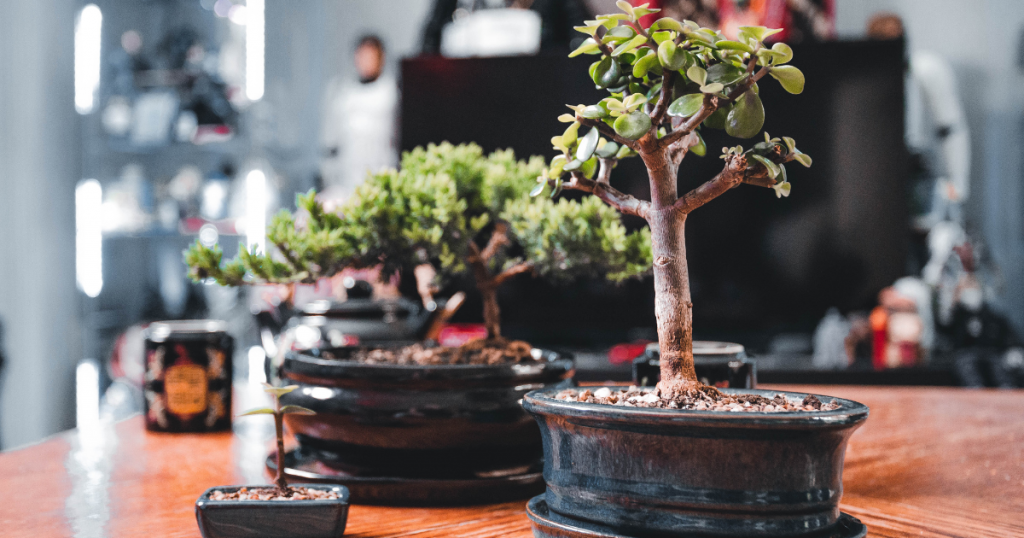
Incorporating a bonsai tree into your home decor can bring an element of nature and tranquility to any room. These miniature versions of full-size trees are not only visually striking but also believed to have a calming effect on the mind and body. Cultivating a bonsai tree is an art form that has been admired for centuries and is considered a symbol of beauty and elegance. The process of incorporating a bonsai tree into your home decor starts with selecting the right tree. There are many different types of bonsai trees, each with unique characteristics such as size, shape and required care. Once you have chosen your tree, you must select a suitable pot that complements the tree and the overall look of your home decor. Pot material, color, and design all play a role in the final presentation.
After the tree and pot are chosen, you will need to decide on the best location to place it in your home. Consider the amount of light and humidity that the tree needs and try to mimic its natural environment as closely as possible. A windowsill or table near a window is a common place but it can also be placed on a low table or stand in the living room or hallway. Remember that regular care and maintenance are crucial for the tree’s health and longevity, so make sure to research the specific care requirements of your chosen tree and create a schedule to ensure it receives the proper attention.
When it comes to incorporating a bonsai tree into your home decor, the first step is to select the right tree. With so many different types of bonsai trees available, it can be overwhelming to choose the perfect one. It’s important to consider the size, shape, and overall aesthetic of the tree when making your selection. Additionally, you should take into account the amount of light and care that the tree will require, as this will affect where you can place it in your home and how often it will need to be tended to.
Some popular types of bonsai trees include the juniper, pine, and maple. Juniper is a hardy tree that is easy to care for and is available in a wide range of shapes and sizes. The pine tree is also a popular choice and is known for its unique needles and bark texture. Maple trees are known for their vibrant autumn colors and are a beautiful addition to any home.
Ficus is another one of the popular bonsai, that are versatile and easy to shape and can be grown indoors or out. They can tolerate low light conditions and have a great potential as bonsai.
Another option is, if you are looking for something unique or rare, you can also consider tropical or subtropical species like the banyan, flame tree, or bougainvillea which are not only beautiful but also challenging to grow and shape.
It’s also worth considering the different styles of bonsai. Formal upright, casual upright, slanting, cascading, and literati are among of the styles to choose based on the shape you want and the appearance you want to create.

The next step in incorporating a bonsai tree into your home decor is selecting a suitable pot. Bonsai pots come in a variety of materials, including ceramic, plastic, and glazed pottery. Each material has its own unique benefits and drawbacks, and the right choice will depend on your personal preferences and the overall look you want to achieve.
Ceramic pots are a popular choice and come in a wide range of colors and designs. They are durable and can withstand high temperatures, making them suitable for both indoor and outdoor use. Ceramic pots are also porous, which allows them to breathe and promote healthy root growth. However, they are also fragile and can be quite heavy, making them harder to move around.
Plastic pots, on the other hand, are lightweight and portable, but they lack the aesthetically pleasing qualities of ceramic pots. They are also less resilient and are prone to cracking over time. They are good for indoor bonsai but unsuitable for outdoor bonsai because UV rays from the sun might cause discolouration and the plastic to break down over time.
Glazed pottery pots resemble ceramic pots but have a glossy, glazed finish that gives them a more polished appearance. They can be attractive, but they are also more expensive and may not be ideal for all areas since they can hold water, causing root rot or making the tree too dry.
The pot’s form is also a significant element. Bonsai pots come in a variety of forms, including oval, rectangular, and square, each with its own distinct appearance. The pot’s form should compliment the tree and the overall appearance of your home dcor.
The color and style of the pot should also be considered. The container should compliment the tree and the general appearance of your property while also offering its own distinct aesthetic charm. Pots with various designs and patterns are available, including traditional Chinese or Japanese styles, modern or minimalist designs, and other aesthetic possibilities.
Once you have selected the right tree and pot, it’s time to decide where to place your bonsai tree in your home. Placement is important as it not only affects the tree’s appearance but also its health and longevity.
A common place to put a bonsai tree is on a windowsill or table near a window. This allows the tree to receive adequate sunlight, which is essential for its growth and survival. You should pay attention to the tree’s specific light requirements and avoid placing it in direct sunlight if it is not tolerant to it, as it can cause leaf burn and damage to the tree.
If you have a larger bonsai tree, you may want to place it on a low table or stand in the living room or hallway. This allows the tree to be viewed at eye level and can make for an impressive focal point in the room. When deciding on a location, consider the amount of light and humidity that the tree will need, and try to mimic its natural environment as closely as possible.
Another aspect to consider is the overall aesthetic of your home. The bonsai tree should complement the existing decor and not look out of place. You can group different bonsai trees together or pair them with other natural elements like stones, moss or succulents.
It’s also worth considering the different seasons, as the bonsai tree’s appearance can change depending on the time of year. You can place your bonsai tree in a location that takes advantage of its seasonal beauty. For example, you could place it near a window where it can be viewed during the autumn when its leaves change color.
Additionally, you need to pay attention to the practicality of the location you choose, as the bonsai tree requires regular care and maintenance, so it’s important to place it in a location that is easily accessible. This way, you will be able to keep an eye on it and take care of it when it needs it.
Incorporating a bonsai tree into your home decor requires not only selecting the right tree and pot but also regular care and maintenance. Bonsai trees require regular attention to keep them healthy and beautiful. Without proper care, the tree can become stressed and may not thrive.
Watering is a crucial aspect of bonsai tree care, as the tree needs a consistent and appropriate amount of water to survive. The frequency of watering will depend on the tree’s specific needs and the environment in which it is located. For example, trees placed in a dry, air-conditioned room will need to be watered more frequently than those placed in a humid room. Overwatering or underwatering can both cause harm to the tree, so it’s important to find the right balance.
Pruning is another important aspect of bonsai tree care. The tree needs to be pruned regularly to control its size, shape and maintain its overall appearance. Different tree species require different pruning techniques and methods, so it’s important to research the specific care requirements of your tree.
Fertilizing is also an important aspect of bonsai tree care, as it provides the tree with the necessary nutrients to grow and thrive. Fertilizer should be applied according to the tree’s specific needs, and the best time to fertilize is during the tree’s active growth period. It’s essential to follow the manufacturer’s instructions when applying fertilizer, as over-fertilizing can harm the tree.
Additionally, Bonsai trees require Repotting and Root pruning, when the tree has outgrown the pot or when the roots become too dense and rootbound. Repotting should be done at the appropriate time of the year, depending on the tree’s specific needs and it should be done carefully to minimize damage to the tree.
It’s also important to protect your bonsai tree from pests and diseases. Keep an eye out for any signs of infestation or infection and take the appropriate action, whether that’s treating with a pesticide or seeking professional help.
Incorporating a Bonsai tree into your home decor is an excellent way to bring a touch of nature and tranquility into any room. The process of incorporating a Bonsai tree into your home decor starts with selecting the right tree, choosing a suitable pot, and placing the tree in an appropriate location within the home. Each of these steps is crucial for the tree’s health and longevity, as well as for the overall aesthetic of your home.
The right tree should be selected based on its size, shape, and overall aesthetic, as well as the amount of light and care it will require. A suitable pot should complement the tree and the overall look of your home decor, while also providing the right environment for the tree to thrive. Placement is also important, as it affects the tree’s appearance, health and longevity, and it should mimic the tree’s natural environment as closely as possible. Maintenance is an essential aspect of Bonsai care, as it involves regular watering, pruning, fertilizing, repotting and protecting the tree from pests and diseases. With the right tree, pot, placement and maintenance, your Bonsai tree will be a beautiful and cherished addition to your home for many years to come.